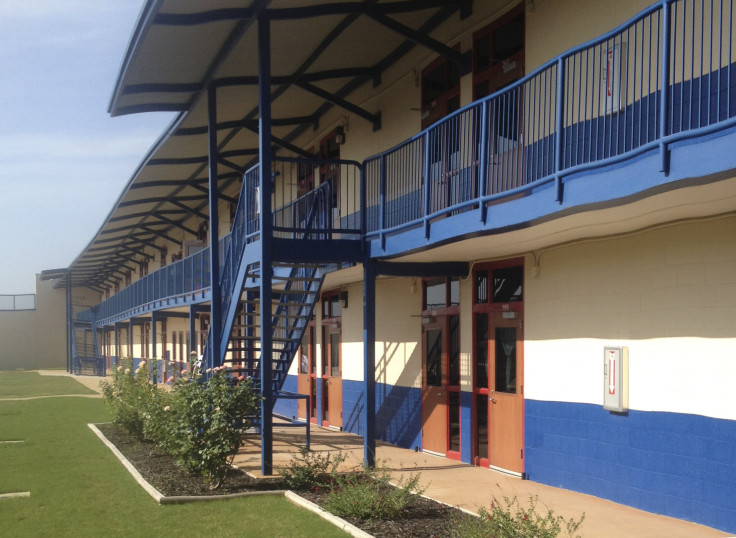Immigration Reform: Backlash Against Family Detention Could Spark Momentum Against Detention System, Activists Say

A federal court ruling against the U.S.’s family detention policy for undocumented immigrants could be the final blow to the Obama administration’s contentious practice after months of rising political pressure. But some of the advocates who pushed hard against family detention were hoping the heightened attention might provide a new opening to rally against conditions in the larger U.S. immigration detention system.
“The court ruling found detention illegal for women and children, but we hope that that will impact detention overall, and that people will start seeing there’s a systemic problem,” said Cristina Parker, immigration programs director for Grassroots Leadership, a Texas-based group that helped organize some of the high-profile protests against family detention in recent months.
U.S. District Judge Dolly Gee’s ruling, issued late Friday, found the Obama administration failed to meet the legal requirements in a 1997 settlement for housing undocumented immigrant children, adding that mothers and children in family detention centers stayed in “deplorable” conditions. The 25-page ruling ordered the families to be released. The federal government was given until August 3 to respond to the order, either by laying out a plan for releasing the remaining 1,700 undocumented immigrants in three family detention facilities -- in Karnes County, Texas, Dilley, Texas and Leesport, Pennsylvania -- or by explaining why it should not have to comply with the order.
Backlash against the family detention policy had already been surging before Friday’s ruling. Over the past year, outcry from immigrants’ rights groups over the Obama administration’s practice mushroomed into a spate of editorials, protests, hunger strikes, lawsuits, high-profile detention center visits and exposés on the conditions undocumented immigrant women and children faced in the facilities. The Department of Homeland Security scaled back its own approach to family detention in response to the pressure: Homeland Security Secretary Jeh Johnson declared earlier this month that the department would end long-term detentions for families in most cases and set reasonable bonds for release. However, many groups that spoke out against family detention have also long been pushing against what they claim to be inhumane treatment and poor conditions in detention centers that house around 31,000 immigrants nationwide.

“This is a good way to start and say that no one should be in detention,” said Maru Mora Villalpando, an organizer with the group Latino Advocacy in Washington state, in a recent interview. Public pressure was largely responsible for helping scale back the family detention policy, she said. “That’s why [immigrants in detention] keep organizing and staging hunger strikes. It works, and we’re changing public opinion,” she said.
Allegations of abuse, malnutrition and psychological trauma in family detention centers have proliferated since the Obama administration sharply expanded the practice last year in response to the influx of thousands of Central American migrants at the southern U.S. border. But there have also been lawsuits and unrest at other immigration detention facilities: In February, the immigration detention center in Raymondville, Texas, was forced to close after detainees staged an uprising over what they said was inadequate medical care. In June, around 200 detainees at the Eloy Detention Center in Arizona reportedly went on a hunger strike after one immigrant there died in custody. A group of former detainees from a Denver facility is also at work on a lawsuit against GEO Group, alleging the company forced them to work for $1 a day or face solitary confinement.
But Parker acknowledged the campaign against immigration detention was a much more daunting and complex affair than focusing on the family detention issue. “It’s easy for people to understand why women and children shouldn’t be in these conditions, but people don’t always have that same reaction when we’re talking about adult single men, which is unfortunate,” she said. “I hope it will open up space for lawmakers to start looking at this.”
There’s been some political momentum around certain aspects of immigration detention in recent months, particularly as it pertains to lesbian, gay, bisexual and transgender immigrant detainees. Immigrant activist Jennicet Gutierrez raised the profile of transgender immigrants in detention after interrupting President Barack Obama at an LGBT pride event at the White House earlier this summer, and last month a group of 35 Democratic members of the House of Representatives sent a letter to the Department of Homeland Security calling for the release of LGBT immigrants in detention. “These individuals are extremely vulnerable to abuse, including sexual assault, while in custody, in particular transgender women housed in men’s detention facilities,” they wrote. That letter came just days before the Immigration and Customs Enforcement agency announced new guidelines for transgender women in detention to be housed in women’s facilities.
But no other issue in immigration detention has sparked momentum in quite the same way that the family detention policy has. Meanwhile, the family detention issue isn’t completely over: The Obama administration could still appeal the ruling, and it’s unclear what would happen if they choose to go that route.
Villalpando, however, said the backlash against family detention was an important way to highlight how much the immigration system has expanded over the years. “They’ve created this monster that’s so complicated that we have to tackle it from so many areas and on so many levels. But I think every little step we take toward ending detention centers is great,” she said.
© Copyright IBTimes 2025. All rights reserved.






















